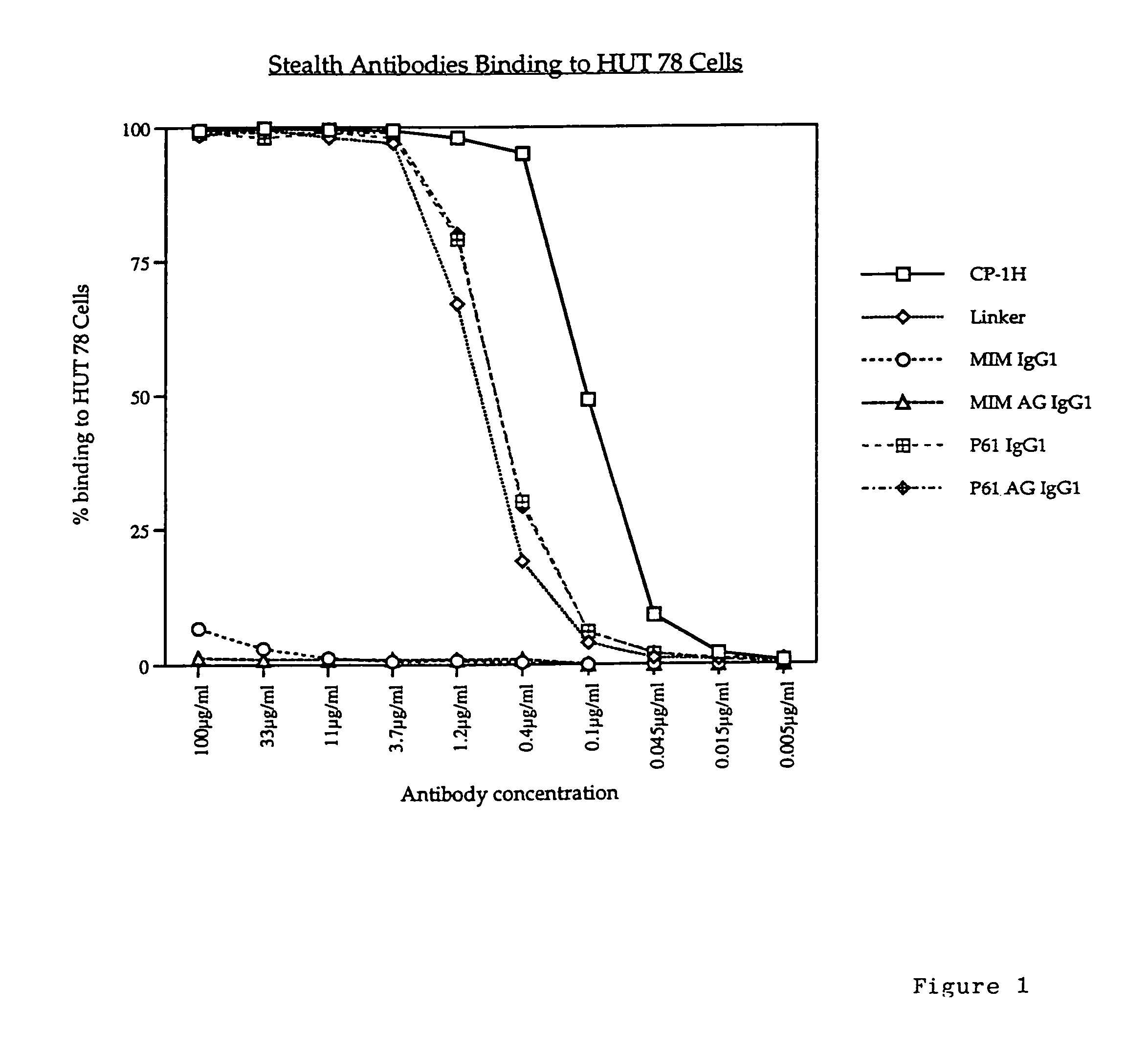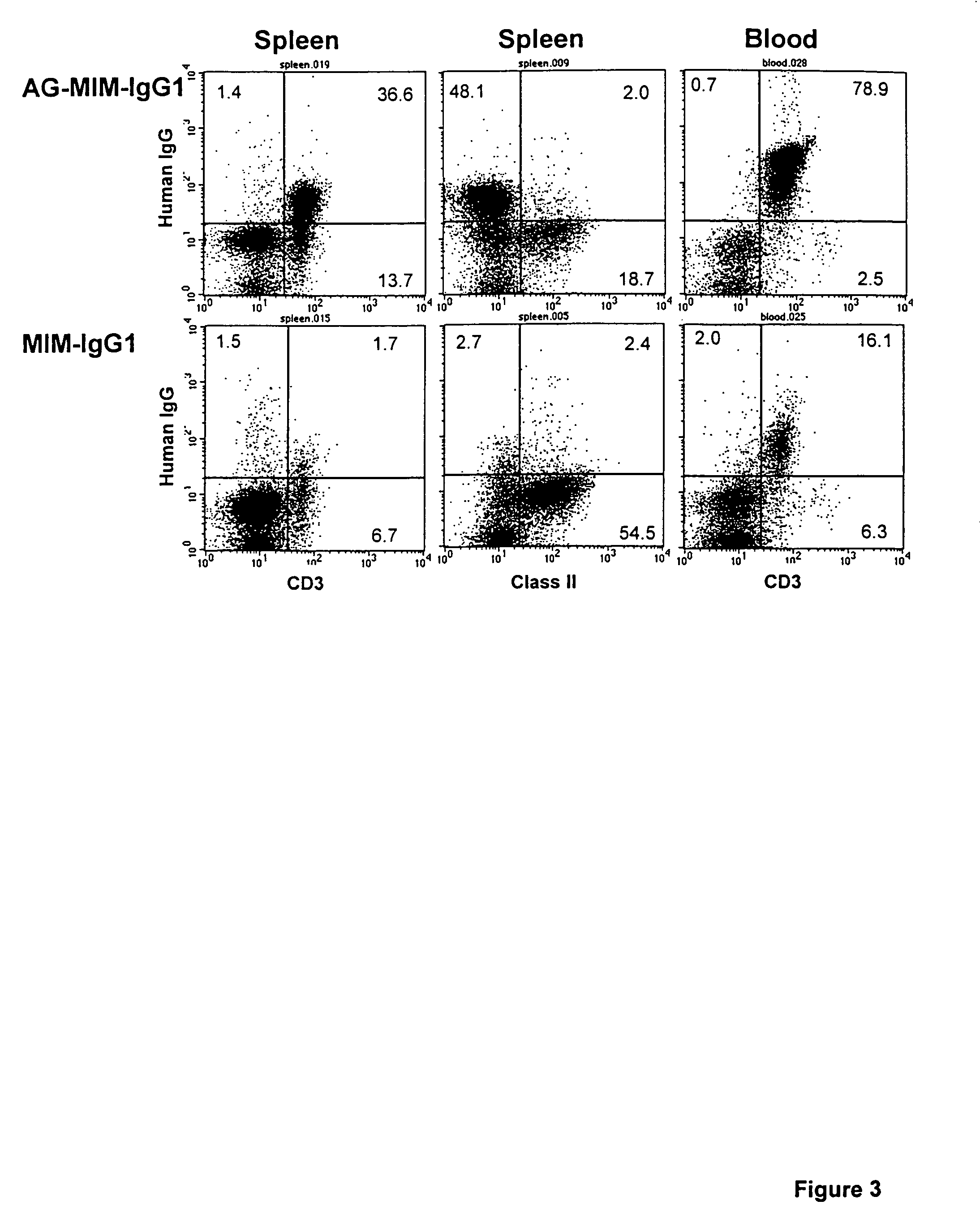Therapeutic antibodies
a technology of antibodies and antigens, applied in the field of therapeutic antibodies, can solve the problems of unreliable patient response, inability to guarantee that patients do not still react against uniqueness, etc., and achieve the effects of reducing binding to the target antigen, increasing binding of the antibody to the target, and reducing binding
- Summary
- Abstract
- Description
- Claims
- Application Information
AI Technical Summary
Benefits of technology
Problems solved by technology
Method used
Image
Examples
Embodiment Construction
Materials and Methods
[0063]The humanised anti-CD52 antibody CAMPATH-1H was used in the following experiments. Various constructs were made using the CAMPATH-1H antibody and the following methodology.
Generation of Non-binding Variants of CAMPATH-1H:
[0064]The cloning of the V-regions of the humanised antibody CAMPATH-1H specific for the human CD52 antigen is performed as described in Gilliland et al (1999) The Journal of Immunology 162:33663-3671. The methodology is based on that of Orlandi et al., 1989, PNAS 86: 3833, using the polymerase chain reaction (PCR). The wild-type humanised CAMPATH-1 light chain was cloned into the vector pGEM 9 (Promega) and used as a PCR template for site-directed mutagenesis.
[0065]A flexible linker (Gly4Ser×2) was added to the amino-terminal end of the light chain between the CAMPATH-1H leader sequence and CAMPATH-1H VL sequence using the oligonucleotide primers PUCSE2 and Link L-3′+Link-L-5′ and PUCSE REV. The resulting fragments were PCR assembled usin...
PUM
| Property | Measurement | Unit |
|---|---|---|
| amino-acid sequences | aaaaa | aaaaa |
| affinity | aaaaa | aaaaa |
| dissociation constants | aaaaa | aaaaa |
Abstract
Description
Claims
Application Information
 Login to View More
Login to View More - R&D
- Intellectual Property
- Life Sciences
- Materials
- Tech Scout
- Unparalleled Data Quality
- Higher Quality Content
- 60% Fewer Hallucinations
Browse by: Latest US Patents, China's latest patents, Technical Efficacy Thesaurus, Application Domain, Technology Topic, Popular Technical Reports.
© 2025 PatSnap. All rights reserved.Legal|Privacy policy|Modern Slavery Act Transparency Statement|Sitemap|About US| Contact US: help@patsnap.com



